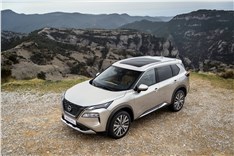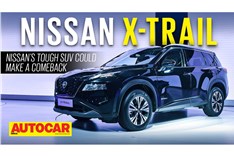Nissan X-trial 2.0 Diesel
Sometimes a car hits the spot and delivers just what customers want
Published on Dec 09, 2009 08:00:00 AM
38,087 Views
Follow us on
If some of you are confused as to why we are testing the X-Trail for the second time around, look closer at the pictures. Though this car may look similar to the earlier X-Trail, it’s actually an all-new car. Every part and every panel is new and the derived styling, Nissan says, is due to the phenomenal success and almost cult-like following of the earlier version. Nissan shifted more than 800,000 X-Trails globally with the old model, and customers and fans want Nissan to retain the car’s unique identity and look. It’s for this reason that you get a similar square-rigged glasshouse, the vertically aligned tail-lamps as well as a similar nose. Of course, the design differs in these areas as well and is more fleshed out and robust in general, but look at the car in isolation and it’s easy to get confused. Keen spotters though need only to look at the outsized triangular headlamps to identify the car. The new car also gets Nissan’s SUV grille and a prominent horizontal line or step in the body that runs along the flanks. Designed to be the automotive equivalent of a trekking boot, the X-Trail looks hard-wearing and as tough as rhino hide, but the boxy and angular shape doesn’t make it a stunner.
The X-Trial is built on the Renault-Nissan alliance C-platform that is shared with the Qashquai. More car like in its basic structure than rock-crawling SUV, it uses a monocoque chassis, all-independent suspension, electric power steering and transversely located engine that primarily powers the front wheels. But there are special bits that make it suitable for more extreme off-road action. Both the front and rear suspension are connected to the body by a rubber-insulated sub-frame to mask the cabin from the workings below, there’s a lockable four-wheel-drive system to help when things really get sticky or loose, and you get a version of hill descent control and hill start too. What you also get are dampers that adjust automatically or frequency selective damping. They go soft on a bumpy road, triggered by the sharp frequency of the bumps but firm up if they detect longer waves, such as when the car is rolling. There’s also ESP and six airbags.
Copyright (c) Autocar India. All rights reserved.







Comments
Member Login
Personal Details
No comments yet. Be the first to comment.